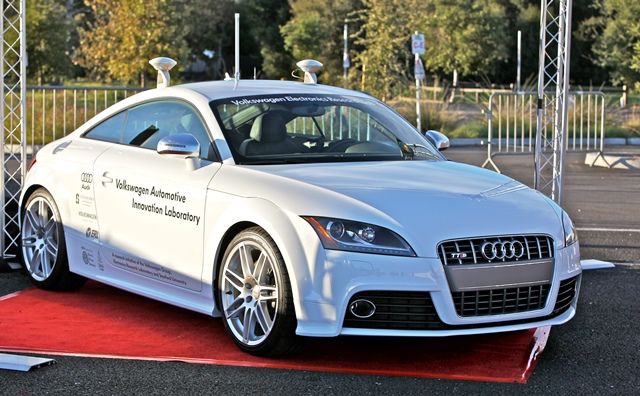Following Nevada, Florida and California, along with the District of Columbia, Michigan has announced that it will soon allow autonomous test cars on public roads. All but one House member joined both chambers in the state legislature to approve the bill, introduced in February by Senator Michael Kowall (R), and Governor Rick Snyder—who has called for Michigan to “be a leader in all of this”—is expected to sign it.
According to the bill’s stipulations, a driver has to be sitting behind the wheel at all times, and the cars must be tagged with “M”-for-”Manufacturer” license plates.
Ford should especially be pleased, as it recently announced a partnership with the University of Michigan to test a self-driving Fusion Hybrid. The University and the federal government are also in charge of a trial of nearly 3000 networked cars in Ann Arbor, while another group wants to create a test facility for these cars at an old GM engine plant in Ypsilanti Township.
Nevada was the first state to allow autonomous vehicles in February 2012, followed by Florida in July, California in September, and Washington, D.C., in April of this 2013. Each state or principality has its own set of rules; Nevada restricts autonomous driving to highways and pre-approved areas for each car, while D.C. requires autonomous cars to run on alternative fuels and pay a mileage tax.
Automakers including Audi, BMW, Lexus, and Mercedes-Benz, as well as suppliers like Continental and Google have been introducing driverless test cars for the past few years, but very few have publicized the results of their trials on real roads. Since Cadillac wants to take its semi-autonomous Super Cruise feature to production as early as 2015, we’ll probably share our local roads with these four-wheeled robots very soon. Most of us can’t wait until the day when we can just sit in the car and let our minds wander into that “highway hypnotism” that we are all already familiar with.



